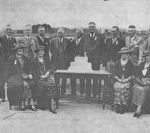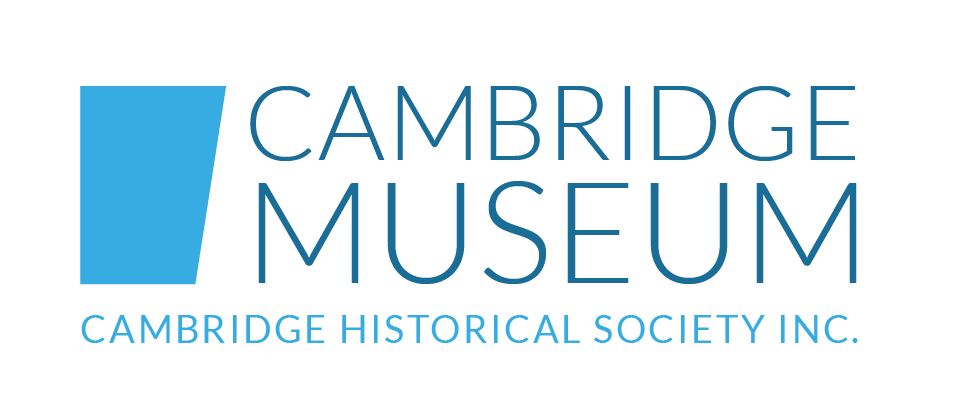Cambridge Town
Learn about the history of town and its districts, schools and roads over the years.
View morePukerimu – Kaipaki

Pukerimu – Kaipaki
(From ‘The News and Theatre Courier’ 12 August 1936)
‘Pukerimu and Kaipaki can lay claim to be among the oldest settled portions of the Cambridge district. Following the cessation of active hostilities with the Natives, sections were granted by the Crown to soldier settlers. The possibilities of the country on the south side of the Waikato River were recognised, and so came such early pioneers as the Fisher brothers, J Gane, Scott, Parr (father of Sir James Parr, the High Commissioner [1936], who was born at Pukerimu). Other early settlers were D Caley, Walker, Wallace, P Cooper, Buttle, J Fitzgerald, Cowley and others.’
‘Here, as in other parts of the district, the settlers experienced all the difficulties of early settlement, but they were good farmers and they laid the foundation of a pastoral district that would be hard to beat anywhere in the Dominion. Back in 1875, the settlers took action to provide educational facilities for their children. Early in the following year the old Pukerimu school came into being, as a result of the gift of a site by the late R Fisher at Walker’s Gully. The old school served its purpose faithfully for 46 years, then being replaced by the existing school nearer the Kaipaki end. The first regular committee of the school was Messrs. D Caley, E B Walker, R Fisher, A Wallace and Jas Gane.’
‘Today, this district is a highly-cultivated area of the country, thanks to the sound foundations laid by the pioneers mentioned. Much of the land continues to be farmed by another generation of Fishers and others, and if one hankers for the touch of the Old Country he has only to go to Pukerimu when the hawthorn hedges are in fruit.’
Pukerimu District
The name Pukerimu is derived from a tall rimu tree on a small hill (puke) – a land mark for those crossing from Ohaupo to Maungatautari in pre-European times. The area then was heavily populated and the land ideal for kumara, potatoes, melons, maize, wheat and fruit. Maungatautari provided birds, berries and medicinal needs; the swamps were alive with eels, pukeko, ducks; and the Waikato River provided the life line.
The district has about 140 borrow pits (areas from where Maori took gravel etc to add to the gardens) as well as six pa sites on both sides of the Waikato River and four along the Mangawhero Stream.
Early in 1864 Pukerimu was the landing place of the British Army. Here they built redoubts on either side of the river before marching to Orakau in April to meet the Maori in the last battle of the Waikato Land Wars. Supplies came up the river from Auckland on a three day journey and by August 1864 the redoubts were abandoned when Cambridge was established.
James and Robert Fisher and Joseph Gane were the first white settlers in the district and they took up their land of ti tree and fern in 1865 as substitute soldiers of the 3rd Waikato Militia. The first white child born in the district was John Scott Fisher in 1868, son of John and Margaret Fisher.
During the 1870’s there were several scares from the Maori with Te Kooti at large and the murder of Timothy Sullivan in 1873 at Roto-o-Rangi. Settlers formed the Cambridge Cavalry Volunteers and patrolled the area from 1872 to 1882.
Fat cattle and wheat for the Auckland market were the first farming ventures. From 1874 the wheat was ground at Hallys’ Mill on the bank of the Waikato River, near the old Weddell Aotearoa Meatworks. Cropping and dairy farming later became the mainstay.
In 1871 the first church was built by the Methodists and used alternatively by Methodists and Presbyterians. In 1901 it was moved, with the help of a traction engine, to its present site. In 1926, when it was due for repair, the proposal of a new undenominational church was agreed to with trustees from each of the Methodist, Presbyterian and Anglican churches. This new church was opened in 1928.
The school at Pukerimu was started in 1876 near Walker’s Gully on land gifted by Robert Fisher. The children came from quite some distance, some crossing the river from Hautapu.
The school became the social centre for the district and the meeting place for the newly formed Pukekura Road Board (the first local body of the district). In the early 1880’s the school was also the Post Office with mail arriving twice a week from Ohaupo.
A new school was built and opened in June 1920 closer to the Kaipaki end of the district and called the Kaipaki District School.
Today it is a very picturesque farming area.
Researched and written by Eris Parker
Ref: Cambridge Museum Archives
Disclaimer:
While all due care has been taken to verify information contained on this site, the Cambridge Museum accepts no responsibility for any errors, omissions or misrepresentation.
Copyright © 2003 – Cambridge Museum – All Rights Reserved.
